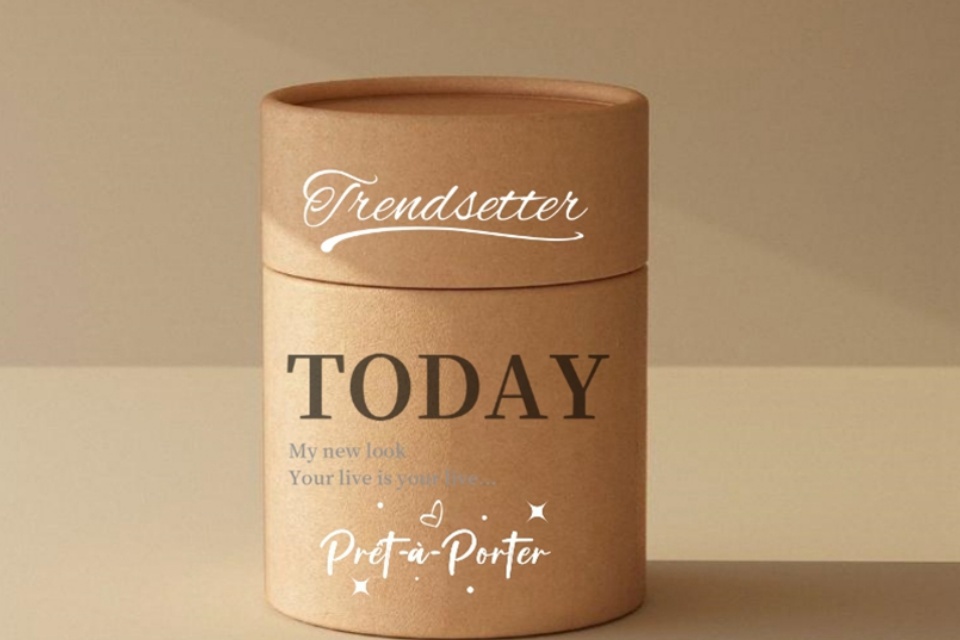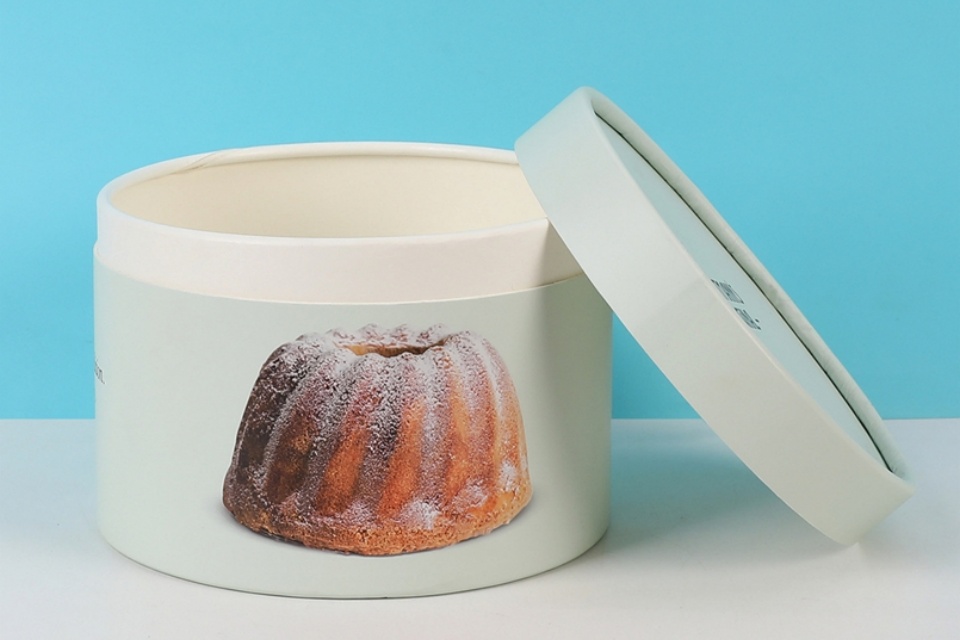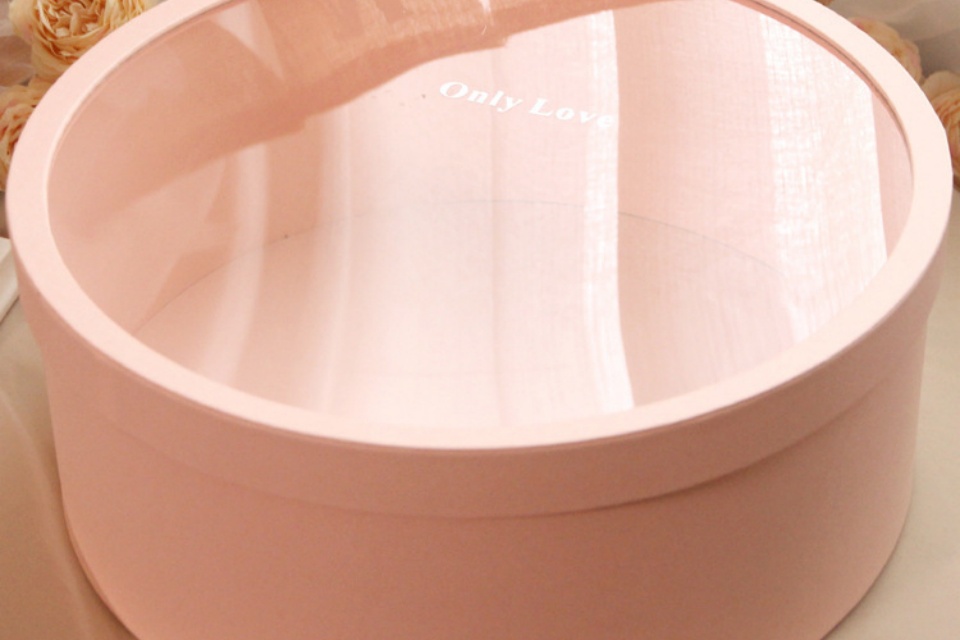Lastest News
Sustainable Paper Tube Packaging Options
Sustainable Paper Tube Packaging Options
Summary
Sustainable paper tube packaging refers to eco-friendly packaging solutions made primarily from recyclable materials, designed to minimize environmental impact while effectively protecting products. This type of packaging has gained prominence in recent years due to its versatility and sustainability attributes, making it an attractive alternative to traditional plastic packaging in various industries, including food, cosmetics, and personal care. The growing emphasis on sustainability in consumer products is driving demand for innovative packaging solutions that align with eco-conscious values, reflecting a significant shift in market dynamics towards greener practices.
The notable advantages of sustainable paper tube packaging include its biodegradability, reduced carbon footprint, and ability to be produced from renewable resources. These characteristics not only fulfill consumer demands for environmentally responsible products but also contribute to a circular economy by lowering reliance on virgin materials. Furthermore, the paper tube industry has embraced advancements in manufacturing techniques, enabling the production of robust packaging that maintains product integrity while adhering to sustainability standards.
Despite its benefits, the sustainable paper tube packaging market faces challenges, including competition from cost-effective plastic alternatives and technical limitations regarding material performance. Additionally, consumer education and awareness regarding the environmental benefits of paper tubes are essential to counteract confusion stemming from various packaging options available in the market. The balance between aesthetic appeal and sustainable practices continues to be a pivotal topic, as brands seek to meet both consumer expectations and sustainability goals.
As global initiatives increasingly prioritize sustainability, the future of sustainable paper tube packaging appears promising, with projections estimating significant market growth over the coming years. Innovations in material technology and design are anticipated to further enhance the viability of paper tubes, solidifying their role in eco-friendly packaging solutions and catering to the evolving preferences of environmentally conscious consumers.
History
The history of paper tube packaging is closely tied to the evolution of paper and cardboard. The invention of paper is credited to Ts'ai Lun in 105 AD in China, where he developed the first form of paper by pulping rags, fishing nets, and later refining the process with plant fibers. This innovation paved the way for widespread paper production, which spread throughout Asia and eventually to Europe, leading to the establishment of England's first paper mill in 1495.
In the 1600s, cardboard was introduced, originating from early forms produced in China. These thick, durable sheets were initially used for packaging and protection. The 19th century saw significant advancements in the paper-making process, with the invention of paper tubes occurring in the mid-1800s. This development was facilitated by the use of a grinding machine, which improved the efficiency and cost-effectiveness of paper production. By 1843, machines capable of transforming wood into pulp were being utilized in Germany, further refining the processes that would lead to the creation of both cardboard and paper tubes.
The 20th century brought further innovations in paper and packaging technologies, leading to a variety of designs and applications for paper tube packaging, which are now recognized for their versatility and eco-friendliness. Today, paper tube packaging is celebrated for its sustainability, made primarily from recyclable materials and designed to meet the needs of various industries including food, cosmetics, and electronics. The ongoing development in this field reflects a growing emphasis on sustainable practices and reducing the environmental impact of packaging.
Types of Sustainable Paper Tube Packaging
Sustainable paper tube packaging encompasses a variety of materials and manufacturing processes designed to minimize environmental impact while providing effective protection for products. The primary types of materials used in this packaging include Kraft paper, paperboard, and recycled paper.
Kraft Paper Tubes
Kraft paper is a popular choice for sustainable paper tube packaging due to its durability and recyclability. Produced through the kraft process, this paper features high tear resistance and is available in natural brown, white, or black colors. Its strength makes it suitable for industries requiring robust packaging solutions, such as food and beverages and pharmaceuticals. Kraft paper is not only eco-friendly but also contributes to reduced carbon emissions when compared to plastic alternatives.
Manufacturing Process
The manufacturing of Kraft paper tubes involves specialized processes that utilize the inherent strength of the material. The production begins with the chemical treatment of wood fibers to remove lignin, resulting in pure cellulose fibers that are stronger and longer than those produced by other methods. This strength is essential for creating sturdy and reliable packaging.
Paperboard Tubes
Paperboard, crafted from paper pulp, is another widely used material in sustainable paper tube packaging. It is lightweight yet strong, allowing it to provide structural support for various products, including cosmetics and cereals. Paperboard is typically sourced from sustainably managed forests, ensuring that the raw materials used are renewable and environmentally friendly.
Characteristics
Paperboard tubes are notable for their versatility, as they can be easily cut, folded, and shaped into different designs. This adaptability allows brands to align their packaging with their vision while maintaining a commitment to sustainability.
Recycled Paper Tubes
Recycled paper serves as a cornerstone in sustainable packaging solutions, with many manufacturers opting for post-consumer recycled fibers to minimize their environmental impact. Recycled paper tubes are not only budget-friendly but also effective in protecting products while promoting eco-friendly practices. They are made from renewable resources and are fully biodegradable, reducing the ecological footprint of the packaging.
Environmental Benefits
The use of recycled paper in tube packaging helps lower the demand for virgin materials, aligning with the principles of a circular economy. This type of packaging can be recycled multiple times, thus conserving energy and resources. In fact, paper production typically requires 25% less energy than plastic production, further enhancing its sustainability profile.
Specialty Papers
In addition to the standard materials, specialty papers can also be utilized in sustainable paper tube packaging. These papers may feature unique textures, finishes, or coatings that enhance the visual appeal of the packaging while still adhering to eco-friendly standards. However, care must be taken with inks and coatings to ensure they do not hinder the recyclability of the final product.
Advantages
Eco-Friendly Choice
One of the most significant advantages of paper tube packaging is its eco-friendliness. Made from recyclable and biodegradable materials, paper tubes decompose naturally, resulting in a reduced environmental impact when they end up in landfills or natural ecosystems. Additionally, the production of paper tubes generally requires less energy and emits fewer greenhouse gases compared to traditional packaging materials like plastics. This aligns with the growing consumer demand for sustainable products, as evidenced by a McKinsey survey indicating that 77% of respondents view recyclability as an essential characteristic of sustainable packaging.
Versatility and Customization
Paper tubes are versatile and can be customized to fit various products and branding needs. This adaptability allows companies to create unique packaging solutions that stand out in the marketplace while enhancing their brand image. The ability to tailor designs not only aids in product differentiation but also contributes to an enhanced unboxing experience for consumers, making it more memorable and enjoyable.
Optimal Protection
In addition to being environmentally friendly, paper tube packaging provides optimal protection for various products. Their sturdy design can effectively shield items from damage during transportation and handling, ensuring that products reach consumers in excellent condition. This protective quality is essential for maintaining product integrity and customer satisfaction.
Space Efficiency
Paper tubes are also space-efficient, which can lead to cost savings in storage and shipping. Their cylindrical shape allows for better stacking and organization, optimizing storage space and reducing shipping costs. This efficiency contributes to a more sustainable supply chain by minimizing the carbon footprint associated with transportation.
Enhanced Consumer Connection
Sustainable packaging options, including paper tubes, resonate with consumers who prioritize environmental stewardship. Companies that adopt eco-friendly packaging can forge stronger emotional connections with their customers, enhancing brand loyalty and potentially increasing market share. By incorporating storytelling into their branding, companies can highlight their commitment to sustainability, making their products more relatable and memorable for consumers.
Challenges
The sustainable paper tube packaging market faces a variety of challenges that impact its growth and acceptance. These challenges stem from both internal manufacturing issues and external market dynamics.
Competition from Alternative Materials
One of the primary challenges is the intense competition from alternative packaging materials, particularly plastics, metals, and glass. Despite a growing consumer preference for sustainable packaging, plastics continue to dominate the packaging industry due to their cost-effectiveness, durability, and versatility. The availability of cheaper and more durable packaging options creates a significant barrier for paper tube manufacturers striving to capture market share in a cost-sensitive environment.
Material Performance Limitations
Sustainable materials often come with technical limitations that can hinder their performance. For instance, some eco-friendly packaging solutions may not meet the durability or barrier properties required to protect products effectively. The role of packaging is crucial, as it must safeguard the goods inside without compromising product integrity. Transitioning to sustainable materials without increasing the risk of food waste or product damage poses a significant challenge for manufacturers.
Economic Viability
Fluctuations in the prices of raw materials used in paper tube production, such as paper and adhesives, can affect the profitability of manufacturers. Additionally, the costs associated with developing and implementing sustainable packaging solutions may deter companies from fully committing to eco-friendly options. These economic factors create hurdles that manufacturers must navigate to remain competitive in the market.
Consumer Education and Awareness
Another critical challenge is the need for robust consumer education regarding sustainable packaging options. Consumers often experience confusion due to a plethora of environmental messages, many of which can be contradictory or unclear. This lack of clarity can lead to apathy towards sustainable choices, undermining the effectiveness of education initiatives aimed at promoting eco-friendly packaging.
Sustainability vs. Aesthetic Appeal
There is also an ongoing discussion regarding the quality perceptions of sustainable packaging. As companies seek to enhance their brand image and meet consumer demands for sustainability, they must ensure that the aesthetic appeal and functionality of paper tube packaging do not suffer. Balancing sustainability with consumer expectations for quality and design remains a pivotal challenge in the industry.
Applications
Sustainable paper tube packaging options have gained significant traction across various industries due to their versatility and eco-friendly characteristics. This section explores the key applications where these packaging solutions are increasingly utilized.
Food and Beverage Industry
The food and beverage sector is one of the largest contributors to the packaging volume globally, accounting for approximately 45% of the total share in the composite cardboard tube packaging market. These tubes are favored for their ability to maintain the integrity of flavors, aromas, and longevity of food products. They are particularly suitable for packaging snacks, spices, and confectionery items, as their structural strength helps prevent spills and breakage during transport. With growing consumer demand for sustainable packaging solutions, the shift away from plastic packaging has further enhanced the appeal of paper tubes in this sector.
Personal Care and Cosmetics
The personal care and cosmetics segment is experiencing robust growth, with a projected compound annual growth rate (CAGR) that makes it one of the fastest-growing categories in the packaging market. Composite cardboard tubes are particularly popular for products like lip balms and skincare creams, as they offer both protective packaging and aesthetic appeal, enhancing brand visibility on retail shelves. Their lightweight and durable nature makes them ideal for e-commerce shipping as well. As consumers increasingly gravitate toward sustainable packaging options, brands that utilize biodegradable and recyclable materials can demonstrate their commitment to eco-conscious practices, which resonates well with today's consumers.
Home Care and Cleaning Products
In the home care and cleaning products industry, there is a growing trend towards refillable and reusable packaging systems. Companies are exploring ways to minimize single-use plastics while ensuring product integrity. Sustainable packaging solutions, such as paper tubes, support these initiatives and appeal to consumers seeking eco-friendly options. The adoption of innovative packaging strategies not only addresses environmental concerns but also enhances the marketability of these products among eco-conscious consumers.
Industrial and Specialty Applications
Beyond consumer products, paper tubes find applications in various industrial sectors, including shipping, construction, and specialty markets. Custom-engineered paper tubes serve as reliable solutions for mailing, protective cores, and other specialized needs. The ability to collaborate closely with clients to develop tailored products that meet specific requirements adds to the appeal of paper tubes across diverse applications.
Case Studies
Kellanova's Recyclable Pringles Tube
In 2023, Kellanova launched a new recyclable paper version of its iconic Pringles tube, which has been a staple since its introduction in 1967. This initiative aligns with Kellanova's commitment to ensuring all its packaging is recyclable, reusable, or compostable by 2030. The company noted that consumer feedback from a previous trial of the paper tube indicated strong support for the new design, leading to its full-scale production in Mechelen, Belgium. The advanced production technology is expected to yield over one billion recyclable tubes annually. This redesign not only highlights Kellanova's commitment to sustainability but also serves as a model for the food packaging industry, reinforcing brand loyalty among environmentally conscious consumers.
The Shift in Retailers' Packaging Strategies
Recent studies across 40 global retailers reveal a significant increase in the integration of sustainability into their corporate strategies, with nearly three-quarters of these retailers setting science-based targets for reducing emissions and enhancing the recyclability of packaging. Notably, British supermarket chain Tesco has implemented strict guidelines, stating it will no longer carry brands using excessive or non-recyclable plastic packaging. This trend reflects the growing pressure on brands to adapt to environmentally friendly packaging practices, fostering a market environment where sustainable choices become the norm. Companies that proactively address these challenges are likely to gain competitive advantages in the evolving marketplace.
Consumer Influence on Packaging Innovations
The demand for sustainable packaging has been significantly shaped by informed consumers who prefer products emphasizing eco-friendly packaging solutions. This shift in consumer preferences has prompted manufacturers to adopt responsible packaging techniques, innovate their offerings, and invest in recycling infrastructure. Additionally, these educated consumers advocate for legislative changes that promote sustainability standards and actively engage in recycling programs, further amplifying the push towards reducing packaging waste in landfills and incineration. As brands align their practices with these evolving consumer expectations, the overall environmental impact of the consumer goods industry is likely to diminish.
Future Trends
The sustainable paper tube packaging market is poised for significant growth and evolution in the coming years, driven by increasing consumer demand for eco-friendly solutions, technological advancements, and regulatory changes aimed at enhancing sustainability. The market is projected to reach USD 20.26 billion by 2034, growing at a compound annual growth rate (CAGR) of 6.66% from USD 11.34 billion in 2025.
Evolving Consumer Preferences
Shifts in consumer preferences towards sustainability are a critical driver in this market. As consumers become more environmentally conscious, they are actively seeking products with minimal environmental impact. This trend is prompting companies to innovate in their packaging offerings, leading to increased use of biodegradable materials, custom sizing, and enhanced material strength in paper tubes. Brands that prioritize sustainability in their packaging strategies are likely to gain a competitive edge, benefiting from enhanced brand loyalty and a stronger reputation.
Technological Innovations
Advancements in manufacturing processes are also shaping the future of sustainable paper tube packaging. Companies are exploring innovative techniques to enhance the durability and structural integrity of paper tubes, including the use of composite materials and digital design tools that optimize packaging efficiency. Moreover, the incorporation of eco-friendly practices, such as utilizing recycled materials and implementing energy reduction measures, further supports the sustainability agenda within the industry. These innovations not only improve the performance of packaging but also align with the growing regulatory pressures to minimize single-use plastics and other harmful materials.
Regulatory Environment
The regulatory landscape surrounding packaging sustainability is becoming increasingly stringent, with governments implementing measures to reduce packaging waste and promote circular economy practices. This is evident in markets like France, where reuse and refill models are being legally mandated. Such regulations will likely accelerate the adoption of sustainable packaging solutions, including paper tubes, as companies strive to comply with new standards and mitigate reputational risks associated with environmental irresponsibility.
Market Dynamics
The competitive landscape of the paper tube packaging market features both multinational corporations and emerging startups that focus on innovation and customization to meet diverse consumer needs. The ongoing growth of e-commerce is also driving demand for protective packaging solutions that can efficiently meet logistics challenges while ensuring product integrity. As the market evolves, collaboration among various stakeholders—including manufacturers, retailers, and regulators-will be essential in navigating the complexities of sustainable packaging and identifying synergies that foster a more sustainable future.
Categories
Latest News
Contact Us
Contact: Aaron Lee
Phone: +8613570866244
Tel: +8675529490260
Add: Li Songlang 2nd Industrial Zone,No.18,FengTang Rd,Guangming New District


